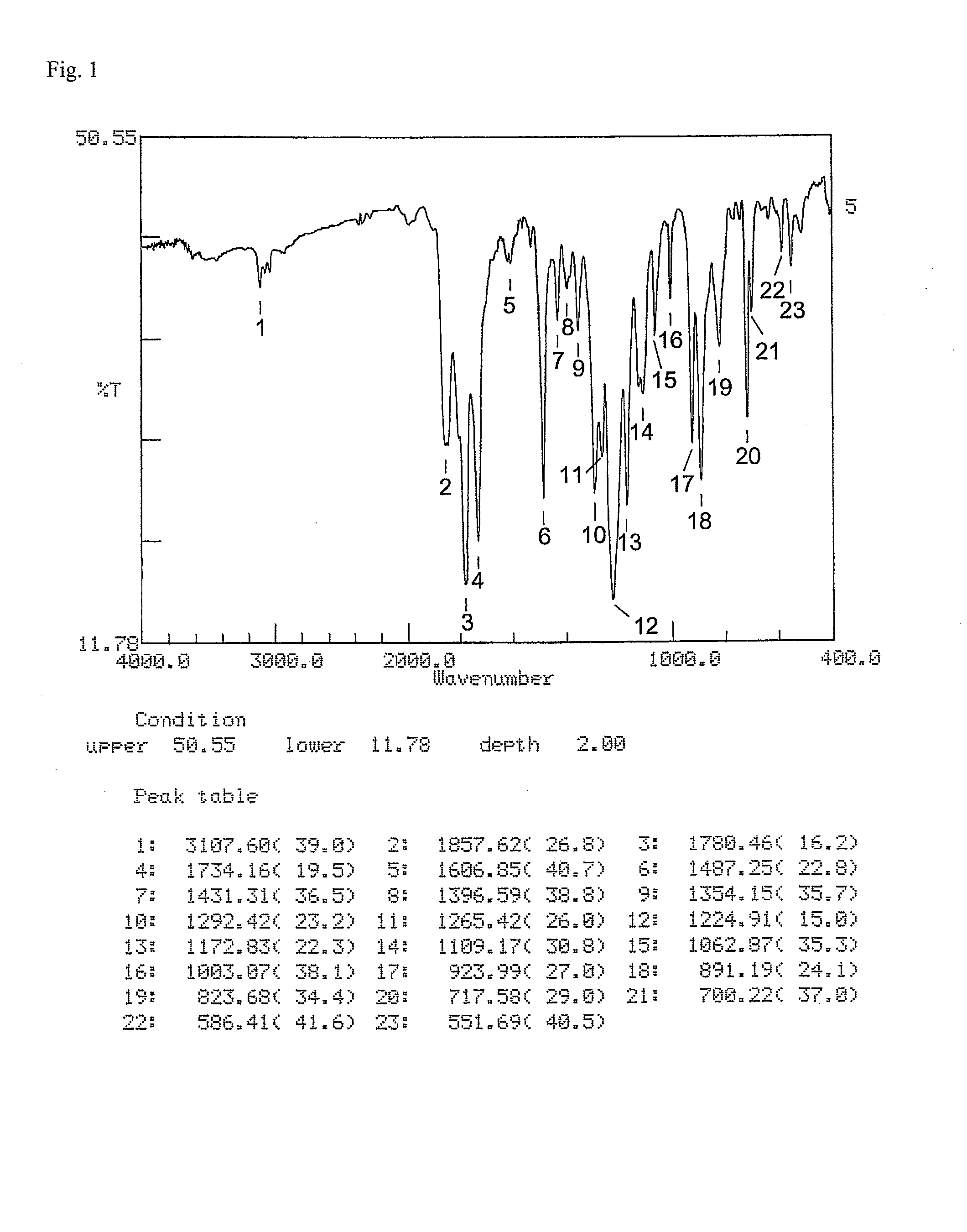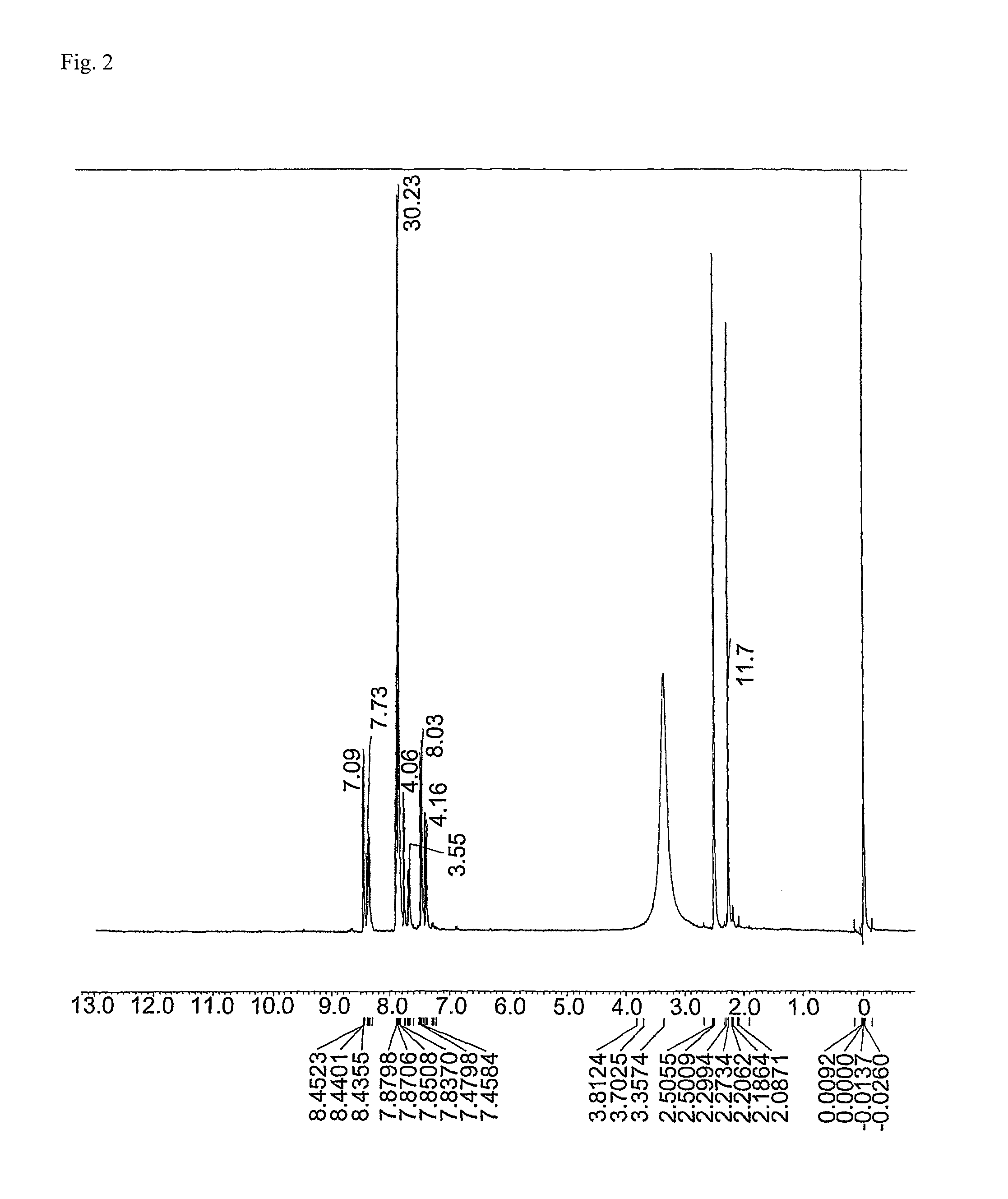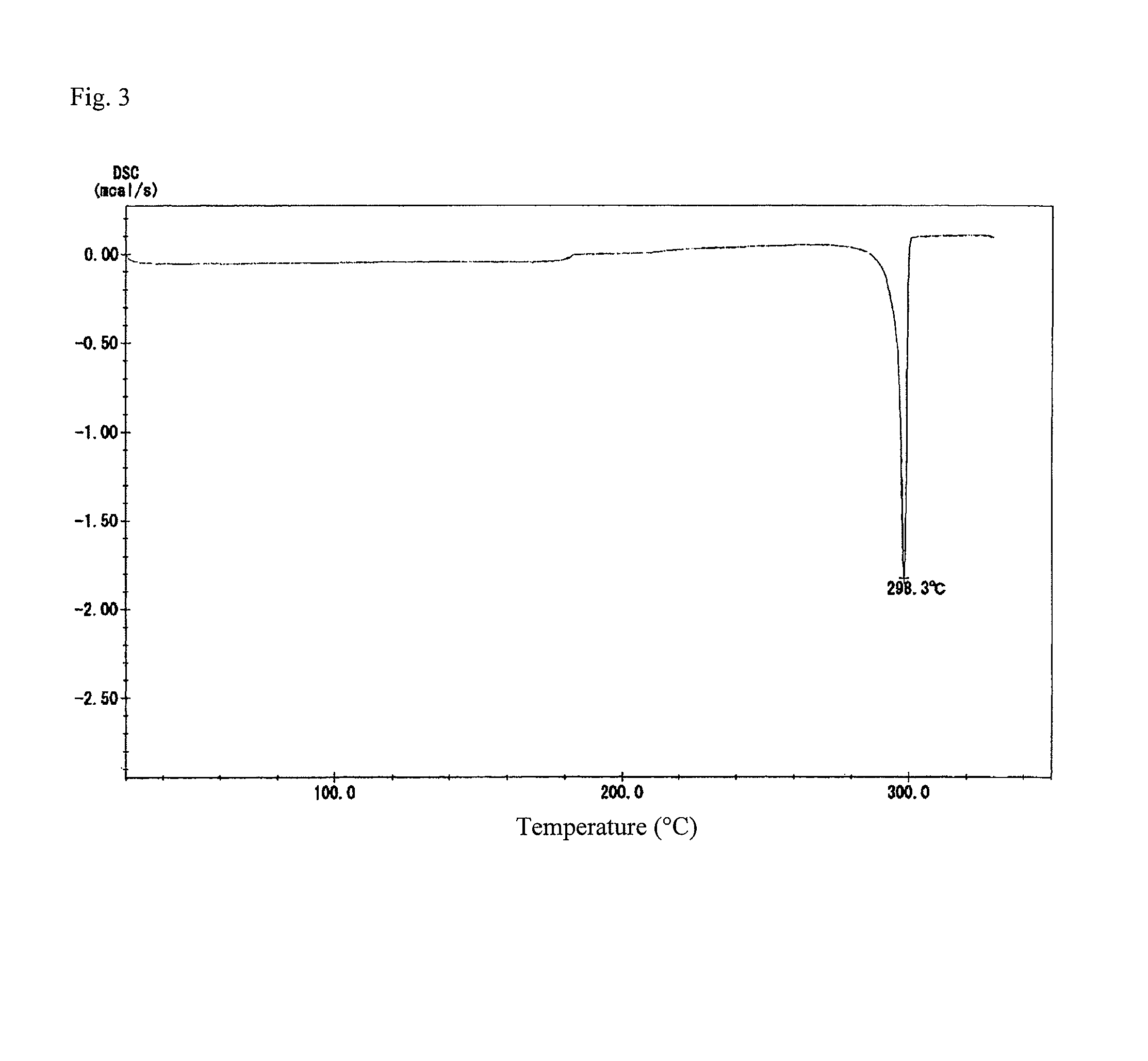Ester group-containing tetracarboxylic acid dianhydride, novel polyesterimide precursor derived therefrom, and polyesterimide
a technology of tetracarboxylic acid dianhydride and ester group, which is applied in the direction of printed circuit details, printed circuits, organic chemistry, etc., can solve the problems of not having not easy to form/process polyimide itself, and residual stress sometimes presents serious problems, etc., to achieve low linearity, high glass transition temperature, and low water absorption coefficient
- Summary
- Abstract
- Description
- Claims
- Application Information
AI Technical Summary
Benefits of technology
Problems solved by technology
Method used
Image
Examples
example 1
Synthesis of Ester Group-containing tetracarboxylic acid dianhydride
[0182]An ester group-containing tetracarboxylic acid dianhydride as expressed by formula (21) was synthesized as follows. 30 mmol of trimellitic acid chloride was put in an eggplant flask, after which anhydrous tetrahydrofuran was introduced to dissolve trimellitic acid chloride and septum seal was applied to prepare solution A (solute concentration: 20 percent by weight). In another flask, DHTP-M (15 mmol) was dissolved in anhydrous tetrahydrofuran and then 60 mmol of pyridine was added, after which septum seal was applied to prepare solution B (solute concentration: 20 percent by weight).
[0183]Solution B was dripped into solution A over a period of 1 hour using a syringe while cooling and agitating the mixture in an ice bath, after which tetrahydrofuran was added to dilute the mixture until the solute concentration became 12 percent by weight, and then the diluted mixture was agitated for 24 hours at room temperat...
example 2
Synthesis of Ester Group-containing tetracarboxylic acid dianhydride
[0184]An ester group-containing tetracarboxylic acid dianhydride as expressed by formula (16) was synthesized as follows. 60 mmol of trimellitic acid chloride was put in an eggplant flask, after which 40 mL of anhydrous N,N-dimethyl formamide (DMF) was introduced to dissolve trimellitic acid chloride at room temperature and then septum seal was applied to prepare solution A (solute concentration: 25 percent by weight). In another flask, 20 mmol of a diol expressed by formula (6) (referred to as “OC-BP”) was dissolved in 14 mL of anhydrous DMF at room temperature (solute concentration: 25 percent by weight), and then 180 mmol of pyridine was added, after which septum seal was applied to prepare solution B.
[0185]Solution B was dripped into solution A using a syringe while cooling and agitating the mixture in an ice bath, after which the mixture was agitated for 12 hours at room temperature. After the reaction had comp...
example 3
Synthesis of Ester Group-containing tetracarboxylic acid dianhydride
[0186]An ester group-containing tetracarboxylic acid dianhydride as expressed by formula (18) was synthesized as follows. 20 mmol of trimellitic acid chloride was put in an eggplant flask, after which anhydrous THF was introduced to dissolve trimellitic acid chloride at room temperature and then septum seal was applied to prepare solution A (solute concentration: 15 percent by weight). In another flask, 10 mmol of a diol expressed by formula (8) (referred to as “TMP-BP”) was dissolved in anhydrous THF at room temperature (solute concentration: 15 percent by weight), and then 30 mmol of pyridine was added, after which septum seal was applied to prepare solution B.
[0187]Solution B was dripped into solution A using a syringe while cooling and agitating the mixture in an ice bath, after which the mixture was agitated for 12 hours at room temperature. After the reaction had completed, white precipitate (pyridine hydrochl...
PUM
| Property | Measurement | Unit |
|---|---|---|
| water absorption coefficient | aaaaa | aaaaa |
| water absorption coefficient | aaaaa | aaaaa |
| water absorption coefficient | aaaaa | aaaaa |
Abstract
Description
Claims
Application Information
 Login to View More
Login to View More - R&D
- Intellectual Property
- Life Sciences
- Materials
- Tech Scout
- Unparalleled Data Quality
- Higher Quality Content
- 60% Fewer Hallucinations
Browse by: Latest US Patents, China's latest patents, Technical Efficacy Thesaurus, Application Domain, Technology Topic, Popular Technical Reports.
© 2025 PatSnap. All rights reserved.Legal|Privacy policy|Modern Slavery Act Transparency Statement|Sitemap|About US| Contact US: help@patsnap.com



